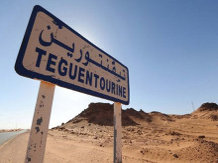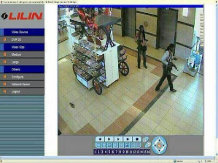Similarities in Tactics in Major Attacks on Western Targets in 2013: A Look at Tigantourine and Westgate
By Rita Katz and Margaret Foster
Two of the most high-profile jihadi attacks during 2013 displayed a striking similarity in targets and tactics, raising the possibility that the attacks are on the vanguard of an emerging trend in jihadi operations.
In the cases of the January 2013 hostage crisis at the Tigantourine gas facility near In Amenas, Algeria, and the September 2013 Shabaab siege of the Westgate Mall in Nairobi, Kenya, small teams of militants from a transnational jihadi group carried out a high-profile operation that targeted Westerners and non-Muslims only in Western-linked economic and commercial interests. Both attacks resulted in multi-day hostage crises, during which armed militants infiltrated a commercial complex and were able to hold the targeted facility hostage for several days before security and military agents overran their positions.
In Amenas and Westgate Sieges

The jihadi siege of the Tigantourine natural gas plant, located near the Algerian-Libyan border, began early in the morning of January 16, 2013, when approximately 40 jihadi militants associated with the al-Mulathameen [Masked Ones] Brigade attacked two buses transporting employees from plant. The Brigade, which was formed in late-2012 and designated as a terrorist organization by the U.S. State Department on December 18, 2013, is led by one of the most-wanted, and most experienced, jihadi commanders in North Africa, Mokhtar Belmokhtar.
The attackers, an international group which reportedly included fighters from Canada, Egypt, Mali, Mauritania, Niger, and Tunisia,[2] were head by a Nigerien commander, Abdul Rahman al-Nigeri, who was known within the group as being responsible for particularly difficult missions. After attacking the bus, the assailants-- several of whom were described as not having Algerian accents and at least one of whom spoke fluent English-- overran the plant. Once inside, after separating the Muslim hostages, they headed to the living quarters before entering the plant's main facility. Taking control of the site, the militants mined the plant and searched the facilities for foreign workers, killing some, and forcing others to wear explosives. The standoff was brought to an end three days later, on January 19, 2013, after Algerian special forces launched an attack to retake the site. Ultimately over 800 people were taken hostage, 132 of which were foreigners, and one Algerian hostage and 39 foreign hostages were killed.

The al-Mulathameen Brigades' attack on the Tigantourine plant used similar tactics to al-Qaeda's branch in Somalia, the Shabaab al-Mujahideen Movment, when as many as 15[3] gunmen stormed an upscale shopping mall in Nairobi, Kenya, on September 21, 2013. The Shabaab's attack team, a multinational coalition including a Norwegian of Somali descent,[4] held the mall hostage for four days, until being defeated by Kenyan special forces. The Westgate Mall attack began at midday on Sunday, September 21, when the Shabaab fighters stormed the mall with grenades and assault rifles, taking hostages and firing at patrons of the mall complex. After seizing control of the mall, the assailants went through the building, eventually restocking their supplies from a weapons cache located in the site and barricading themselves inside a supermarket within the mall. The progression of Shabaab fighters through the mall's site and into the Nakumatt supermarket echoes the trajectory of the Tigantourine attackers, who similarly chose a central location from which to make their stand.
Tactical Similarities

Shabaab gunmen inside the Westgate mall
Tactically, both the Tigantourine and Westgate operations required extensive preparation and planning for the respective sites, with security forces even noting the attacker's detailed knowledge of the facilities in both of cases. In order to successfully carry out their operations, the attackers had to fulfill a specific set of criteria: they needed to know the site well enough to infiltrate it, have access to a wide array of weaponry and ammunition, and be trained to hold ground for a long period of time.
Remarking on the capabilities of the Shabaab attackers at the Westgate mall, an official with the African Union who was inside during the attack later observed: "Believe me, these guys were good shooters... You could tell they were trained."[5]
Both the al-Mulathameen Brigade attackers at Tigantourine and the Shabaab attackers at Westgate possessed inside information about the sites of their operations, knowing their way around the facilities and maintaining current, site-specific information reportedly gained while employed in the complexes. At the Tigantourine facility, one of the fighters had worked as a driver on the site,[6] and the attackers had knowledge about internal camp politics—referring to an ongoing labor dispute.[7] Once inside the facility, the team of terrorists used a map to guide their movements. Months later it was revealed that the Shabaab attackers of the Westgate Mall had a similarly high-level of information about the mall, with reports suggesting that they learned about the layout of the site by renting a shop within the complex. Analysis after the attack suggested that the attackers had blueprints of the mall and information about stairways used by mall staff.[8]
In initiating the strikes, the perpetrators of the Tigantourine operation and the Westgate sieges are reported to have taken advantage of porous borders to access their targets from a neighboring state. The al-Mulathameen Brigade attackers entered Algeria from bases in southern Libya, where they trained[9] and may have benefited from links with Libyan facilitators.[10] The Shabaab assailants at the Westgate Mall were identified, variously, as having traveled from Somalia to Kenya via Uganda[11] and as having crossed from Somalia into Kenya in June 2013, three months before their operation, and lived in a Somali neighborhood of Nairobi.[12]
Attempts to Mitigate Loss of Muslim Life
During each of the two sieges, the attackers seized a commercial target with a large number of civilians present. As a consequence, both sets of attacks were characterized by reports of survivors hiding themselves throughout the sites, taking shelter in confined spaces such as storerooms and under furniture.[13] The large sites of the attacks caused the attackers to sweep through, hunting through the interior and giving rise to camera images and reports showing teams of terrorists patrolling the captured buildings. During the sieges, as the terrorists hunted through the site for hostages they attempted to differentiate Muslims from non-Muslims and to protect the lives of those with whom they shared a religion.

During the operation against the Tigantourine plant, the militants sorted foreign workers--which included Americans, Britons, Japanese, and Norwegians--from Algerians and promised Algerians that they would not be harmed. Muslims who could prove their faith by reciting portions of the Quran were taken into a separate area for safekeeping- with one Algerian worker claiming to have been told: "We are your brothers. You have telephones: call your families to reassure them." Other reports from former hostages claim that the attackers released Algerian and Muslim women, and assured Muslim male captives that they were being held because the fighters were worried that the Algerian military would harm hostages.[14]
In messages commemorating the operation, Belmoktar and the al-Mulathameen Brigade trumpeted their attention to protecting Muslim civilians. For example, in a statement received by the Mauritania-based Nouakchott News Agency providing information on the attack, the group asserted:
"As planned...after the commandos gathered a number of Westerners, they released the Muslims in the site, contrary to what the army claimed about freeing them."

Survivors from the Westgate Mall siege similarly reported that the jihadi attackers engaged in efforts to spare Muslims, at one point calling for Muslim shoppers to vacate the area, challenging hostages to name relatives of the Prophet Muhammad or recite Qur'anic verses. In messages posted to their Twitter account on September 21, 2013 taking responsibility for the operation and listing their grievances with the Kenyan military and government, the Shabaab highlighted their efforts to separate Muslims from non-Muslims, writing:
"BREAKING: HSM Press has just made contact with the Mujahideen inside #Westgate Mall. They are still fighting and still strong. Stay tuned!
"Only Kuffar were singled out for this attack. All Muslims inside #Westgate were escorted out by the Mujahideen before beginning the attack"
The attempt to differentiate Muslims from non-Muslims was attested to in the testimonies of former hostages, one of who described how she "witnessed a few people get up and say something in Arabic and the gunmen let them go [and] A colleague of mine said he was Muslim and recited something in Arabic and they let him go as well"[15]
Statements and chatter from jihadists show great support for the operations and in particular, the separating of Muslims from non-Muslims. Writing to an online discussion forum, jihadists approvingly cited reports that the Shabaab attempted to avoid killing Muslims, using the point to draw a contrast between allegedly restrained and lawful actions of the Shabaab attackers and disorderly, indiscriminate, counterattacks from Kenyan forces. Moreover, such users specifically cited the alleged discipline of jihadi attackers to rebut messages challenging the appropriateness of jihadi violence and justified targeting commercial sites.
Conclusion
Two major attacks in Africa, yet carried out hundreds of miles away from each other, displayed remarkable elements of similarity. At both In Amenas and Nairobi, a transnational group of jihadi attackers took control of a major Western-linked commercial site. In each case, well trained attackers wielding light weaponry and taking civilian hostages was able to retain control over the complex for multiple days, despite the mobilization of security forces. And, in both cases, the attackers exhibited effort to identify and remove their co-religionists from the site of the attack.
Each of the attacks was subsequently framed by jihadists as being a carefully targeted operation demonstrating jihadi resolve to defend Muslims against constant Western transgressions against the Muslim community. Deliberately avoiding attacking Muslim civilians during high profile operations may allow the jihadi message to gain greater traction by providing additional credibility to their claims to be defenders of the Muslim community who are forced into battle to respond to a plight that they can no longer able to be overlook. Additionally, such actions leave the jihadi movement less susceptible to charges of hypocrisy: that the movements claim to defend Muslims but are deadly to the community that they claim to be protecting.
The trend of jihadi attackers engaging in public attempts to identify and protect Muslims, in evidence during both the Tigantourine and Westgate attacks, poses serious challenges to attempts to discredit jihadi militants on the basis that they claim to act in the name of Islam, yet kill great numbers of Muslims. Critically, in both of the cases described below, coverage from international media organizations also highlighted the differentiation of targets, adding additional credibility to jihadi claims that they act in self-defense.

